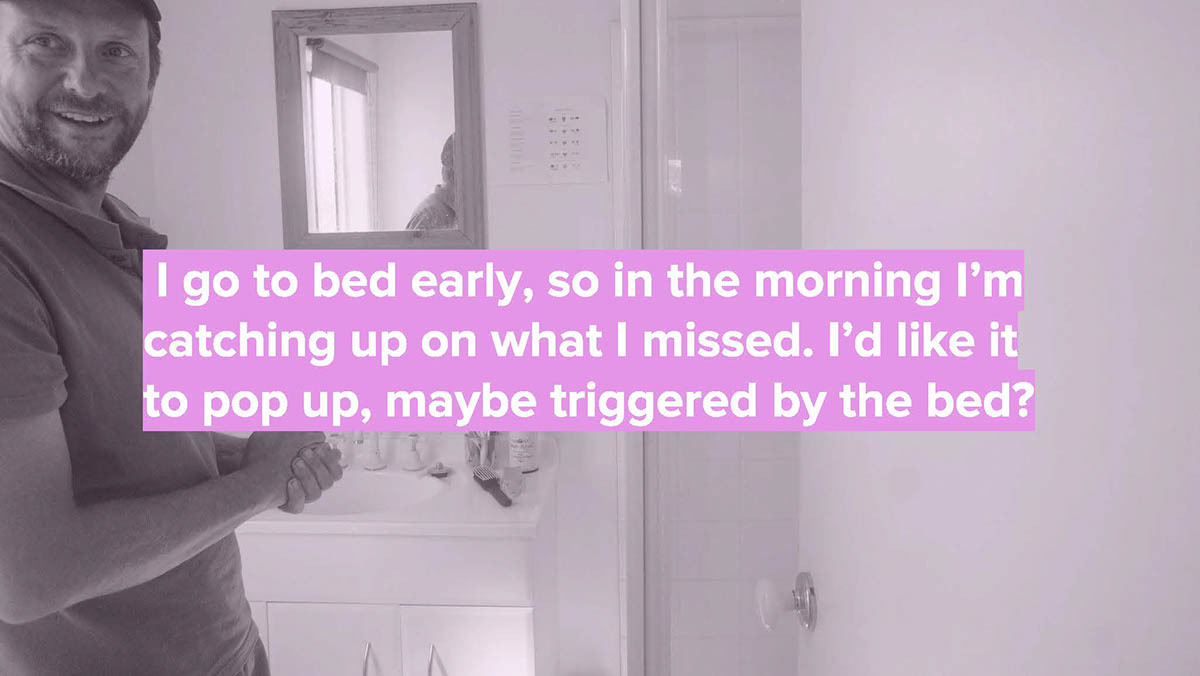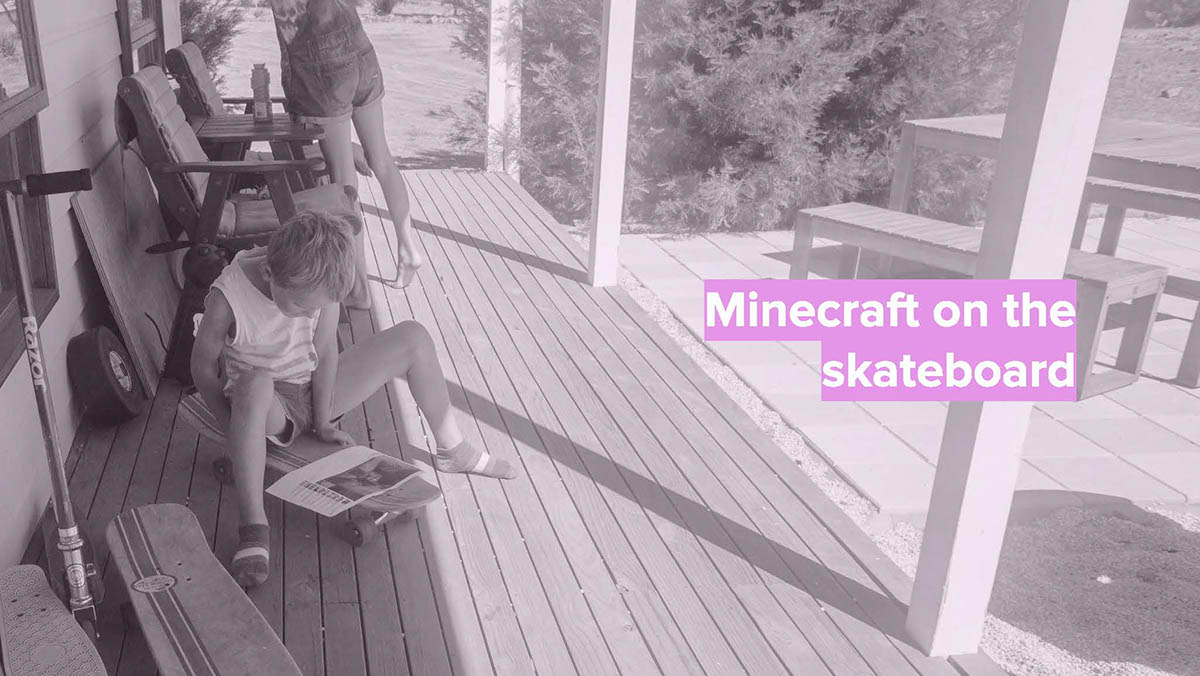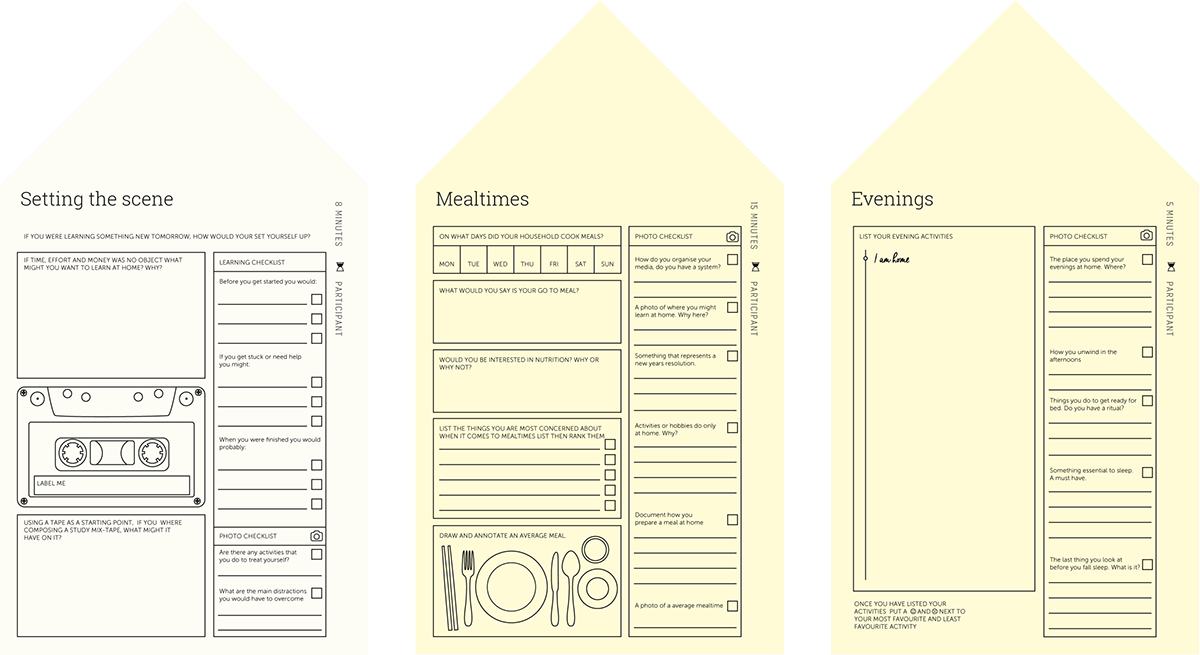
Researching Future homes
How do you get people involved in talking about the future? The first step of any R+D project is getting people interested, involved and on the same footing. We can’t expect everyone to be thinking and talking about 2020 all the time like us.
Before we start approaching people to get involved in our projects we have to first figure out what we want the discussion to be around and how we can get everyone involved and able to participate. Seems common sense hey? What we often have to do—because none are available—is create primer documents, videos and prototypes to gauge people’s reactions to ideas and glossaries or illustrations so that we can have a common language.


This is one example of a primer. A primer being a generic term we use to describe any documents created for the sole purpose of getting people informed on a topic quickly.
Primers
It might be a glossary of terms, a sketch or map. In future homes we created a map of future technologies per room to get a conversation started. We sent out this document to research participants ahead of time so that we could kick-start a discussion.
It meant that everyone would have a handle on what we meant by ‘binaural sound’ or ‘natural user interfaces’ and we can maximise time together.
Video montage
Despite the fact that many "future-of" videos have us living in clinical, precise and mess-free homes. They spark the imagination and get people engaged. Being in the tech space we know what look out for—the brands, the catchphrases, and the artists to follow—we select videos from the fun to the creepy and downright ridiculous.
They are great conversation started both with audience members and content makers.

Home visits
Via contextual inquiry, R+D team spent 20 hours visiting 27 people inside 10 homes located in inner-urban, suburban and fringe areas of Melbourne.
We documented the spaces and asked how media and technology enhances homelife: behaviours, pain-points, home hacks and tech-etiquette. Structured activities got people talking about their needs, dreams and ideas for accessing entertainment, news and information in their future homes.

Body-storming
Augment my home was very simple and very fast. With some basic printouts and one question we got people to imagine how technology in the home might be once liberated from the screens! It wasn’t hard to imagine, or chose, everyone knew what type of media they wanted, and roughly where it make sense.
With all the sensors in the future home, and all the data that it will have access to, your home may very well know when you need a cat gif to get out of bed on Monday morning.
Even in it’s simplicity, this activity also made visible the social dynamics, and etiquette of smart wall space. At the moment we are tied to small personal screens, but how could that change with cheaper projectors, smart wallpapers and sensors?

In this example the husband wanted to wake up and see the cricket scores first thing in the morning, but the wife didn’t want any more technology in the bedroom - at all!
Like everything, the future of technology in the home will be a messy negotiation, and in this case cricket scores where ushered down off the ceiling and out of the bedroom into the ensuite beside the bathroom mirror.

While some struggled to understand how a projector would work on dark bathroom tiles, for others ubiquity couldn’t come soon enough.
Here one of our participants wants to watch Let’s play Minecraft videos while skateboarding outside, while his sister right behind him wants holographic dance instructions.

Voting
Fun-o-meters
Funz or no funz? We used this tool to help people talk about how they enjoyed spending time together in the home. Each household member was asked to separately rate an activity in question (watching TV, playing games together) then reveal their score to see if they agreed. The fun-o-meters were particularly successful because of their low barrier to entry,meaning that everyone who participated could customise their meter and have an opinion on a range of topics despite their age or shyness level. The big reveals often came with cheeky grins and revelation,a great way for us to build rapport and open a discussion on family media dynamics.

Cultural Probes
or Research Kits
Cultural probes were designed to start a conversation around homelife. More than surveys, they captured anecdotes in a playful and engaging way directly from our audience. In this project we asked our participants to self-document various aspects of their daily lives, leading to very rich first hand points of view and data. While gathering data, the custom made toolkits also played a vital role in sensitising participants for an upcoming one-on-one interview, ensuring they were well prepared for deeper discussion.
The kits contained a variety of activities for participants to complete. The goal is often to provoke participants to document, reflect on their day-to-day lives, and, in the process, explore how the future might be different.
Our kits covered five different topics over the course of the week focusing on future home media. The activities included mapping, listing, taking photos and responding to a series of questions. The most successful activities included ranking future technologies, designing an imaginary social event, and tallying toilet based media consumption. These activities gave us a glimpse into the participant's interests in new technologies, what experiences and personalities they would invite into their homes, and helped us understand how pervasive mobile usage has become. The kits were used as a primer and a design outcome, getting participants in the right frame of mind for further questioning via phone interviews.










